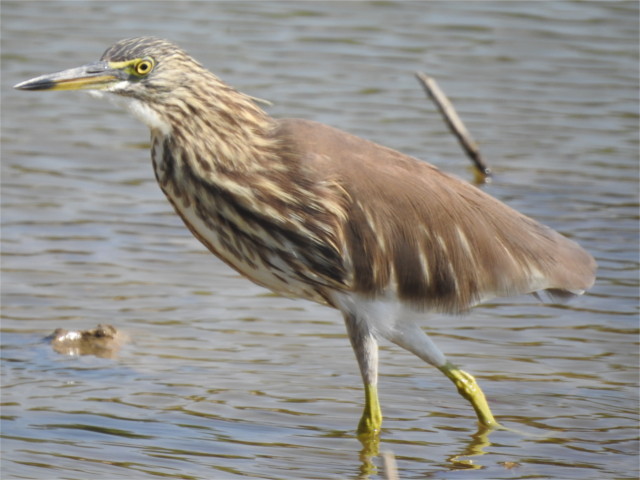When you travel in South, East, or Southeast Asia and see a pond heron like the one in the featured photo, then there seems to be no way to tell by sight which species it belongs to. If I’d seen this almost anywhere in India I would have called it the Indian pond heron (Ardeola grayii). But I took the photo in Andaman’s Sipahijala wetland. This area lies in the geographic overlap of the ranges of the Indian and Chinese pond herons (Ardeola bacchus). So it could have been either. The main zone of overlap for these two species is in eastern and central Myanmar. From western Myanmar and south is the geographic range of the Javan pond heron (Ardeola speciosa), which overlaps in range with the Chinese species. Hydrids are known, so there is some gene flow between the species. Telling them apart is hard in their winter plumage, but the moment you see any part of the breeding plumage there’s no doubt which species they belong to.
I scoured my past for photos of the breeders, but I could not find one. I do most of my birding around winter, which is out of the breeding season of these birds. In February I’d seen this Indian pond heron in Mangalajodi in Odisha. It was exactly the same colour as the one I saw in Andaman, but I could be sure it was the Indian pond heron because the place was outside the range of the other two. The photo below was taken in Jamnagar, Gujarat. Again I could be sure this was an Indian pond heron because it was far outside the range of the other two species.
There aren’t many places on WordPress where bird watchers can share posts. If you post any photos of birds this week (starting today and up to next Monday), it would be great if you could leave a link in the comments, or a pingback, for others to follow. You don’t have to post a recent photo, nor do you have to post a photo of the same bird as mine, but do use the tag “Bird of the Week” to help others find your post. For more information see the main landing page for this invitation.






























